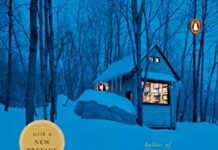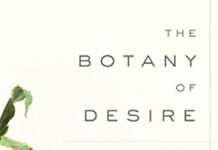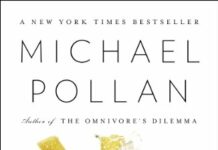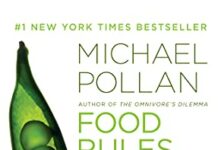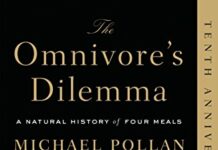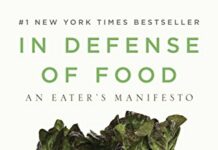
Ebook Info
- Published: 2007
- Number of pages: 276 pages
- Format: PDF
- File Size: 1.91 MB
- Authors: Michael Pollan
Description
“One of the distinguished gardening books of our time,” from the #1 New York Times–bestselling author of The Omnivore’s Dilemma (USA Today). Chosen by the American Horticultural Society as one of the 75 greatest books ever written about gardening After Michael Pollan bought an old Connecticut dairy farm, he planted a garden and attempted to follow Thoreau’s example: do not impose your will upon the wilderness, the woodchucks, or the weeds. That ethic did not, of course, work. But neither did pesticides or firebombing the woodchuck burrow. So Michael Pollan began to think about the troubled borders between nature and contemporary life. The result is a funny, profound, and beautifully written book in the finest tradition of American nature writing. It inspires thoughts on the war of the roses; sex and class conflict in the garden; virtuous composting; the American lawn; seed catalogs, and the politics of planting a tree. A blend of meditation, autobiography, and social history, Second Nature, from the renowned author of The Botany of Desire, In Defense of Food, and other bestsellers, is “as delicious a meditation on one man’s relationship with the Earth as any you are likely to come upon” (The New York Times Book Review). “Usually when Americans have wanted to explore their relationship to nature they’ve gone to the wilderness, or the woods. Michael Pollan went to the garden instead . . . and he’s returned with a quirky and pleasing book.” —Annie Dillard “A joy to read.” —Los Angeles Times
User’s Reviews
Reviews from Amazon users which were colected at the time this book was published on the website:
⭐I didn’t expect a book about gardening to be quite so engaging. Pollan takes the reader on a journey starting with his earliest memories of being in the garden through the establishment of his own garden. In the end though it is less about gardening tips and techniques and more philosophical. Pollan explores why we garden and some of the similarities and differences between British and American gardens.I’ve read many of Pollan’s other books and I enjoyed this one almost as much as the others. The way he writes makes the topic accessible to the reader even if it isn’t what you expect. There are some parts that are less interesting to me, specifically the very early portion and parts of the last chapter on seed catalogs. But there is humor and insight sprinkled throughout that make it enjoyable and worth picking up.
⭐This is a wonderful book! Pollan reaches deep into the realities and mysteries of how and why we garden. Interesting, compelling, and beautifully written.
⭐I downloaded this book when my fiancé and I planted our first garden, last Spring. I became a Pollan fan when I read “The Omnivore’s Dilemma,” so when I saw he had written a book on the experience of gardening, I knew I had to read it.There is so much contained within these pages. The description of his lawn, and the history of lawns in the United States, is something that everyone should read. To understand how the American Dream came to be, we need to also have a grasp on the history of home and landscape designs in this country. His description of lawns, and then of forests, made the issue come to life for me.His description of his grandfather’s garden was priceless. I felt like I was sitting in his grandfather’s garden, eating tomatoes with the two of them.And his fight with the hedgehog–I was taking swats at him, too!Planting my first garden was a real treat. Reading this alongside enriched that experience.
⭐My first exposure to Michael Pollan’s writing was an article in the New York Times Magazine. I loved his writing style and his point of view. He made me think about the environment in ways that were totally new to me. I love those “aha” moments. Those “why didn’t I think of that?” moments. And then my outlook on life and the world around me is subtly altered.So it was with great anticipation that I oopened my copy of “Second Nature: A Gardener’s Education”. Michael Pollan on gardening. It doesn’t get much better than that, right? Well, um, actually it does. I was expecting a completely new perspective on gardening. What I got was just another memoir of a beginning gardener. Admittedly, he does tell much more entertaining stories than most garden memoirists. No one who reads this book will ever forget his monumental battles with a woodchuck culminating in an attempt at incineration that very nearly incinerated the garden. Hilarious, but still quite ordinary. Can you think of a single garden memoir that doesn’t contain a battle with a woodchuck? Just as Hollywood screenwriters use a predictable formula for their storylines, garden memoirists all stick to the same, tired outline: How I started gardening. How I made all the newbie mistakes my first year. How I tried to correct them. How I learned the “right” way to garden.Disappointed, I soldiered on until Chapter 10 when I finally had the hoped for “why didn’t I think of that?” moment. The story of the restoration of a woodland area in his town that had been destroyed by a tornado morphs into a discussion of restoration vs replacement vs allowing Nature to take its course and all of the consequences, intended and unintended, that could happen for each option. Now this is a book that I would like to read. The question of what time period a restoration should mimic is particularly intriguing. Colonial, after changes made by European settlers? Pre-Columbian? Taking into account the fact that the indigenous population also had a significant impact on the local ecology, should the area be restored to the state it was before the Native Americans arrived? These are questions that have never occurred to me when thinking about our altered landscape.Ideally, I would have liked to see the “memoir” part of the book excised and this topic expanded. Where else in the US or even the world has this issue been addressed? What decisions were made and why? Was global warming taken into account? What provisions were made for non-native plant and animal introductions?And then the book reverts right back to the standard memoir. The last two chapters are the obligatory catalog survey and “What my garden looks like now”. Yawn.I’m looking forward to reading more of Michael Pollan’s books and his unique perspective. Even if it is only one or two chapters that grab me, they will be well worth it.
⭐I discovered Michael Pollan’s book, “Botany of Desire”, through required reading when taking a botany class during my undergraduate years; “Second Nature” was a natural follow-up companion, proving just as illuminating and fascinating. Pollan has created a niche for delicately crafting humor, advice, and contemplation about the relationship of humans with nature, and in the case of “Second Nature”, with both the physical and philosophical garden. As a teacher, writer, and gardener myself, I found some of my subconscious thoughts unearthed and glistening on the pages, as Pollan took me on a journey through otherwise unvoiced notions such as the sexuality of roses, the morality of compost, and man’s obsession with non-native lawns. The voyage was delightful, and it created more questions for me than it answered. For that reason, it did it’s job by unleashing further fascination about human coexistence with this awesome and powerful earth.
⭐This is a very interesting book. It arrived quickly in great condition.
⭐Although there was an issue with the order, the customer service was timely and appropriate! A very fair resolution was offered.
⭐I am a gardener. I have to start with this statement, because I relate so very well to Pollan in this regard that I am not able to step outside myself and make a guess if it’s a book for every homeowner or more for those who are interested in gardening. If you have even a passing interest in horticulture, landscaping, or possibly american history/philosophy I would highly recommend this book. It felt so good to read about someone else’s journey through idealism to pragmatism in their own yard, as so much of it reflects my own experiences. There are oodles of quotes and thoughts from other garden writers, many of which I plan to follow up on and read as well. I learned a lot from Second Nature and enjoyed every minute of it.
⭐As a gardener this is a fascinating read with real insight into our relationship with nature. It comes from a very American perspective, and informs about American history and psychology towards nature. It marries this with a personal history and authors own tales of building a garden.I’ve walked away from it with new ways of thinking about gardening and it’s role in our lives. Great book!
⭐This is a thought- provoking, seminal book for any serious gardener. This one is here to stay in my library.
⭐excellent engagement with the nature society relations that every gardener is confronted with. Written in the early 90s, still relevant today.
⭐This isn’t simply a discussion of lessons of gardening, though it does tread that ground. However, Pollan uses that topic as a jumping off point to explore a couple of broader topics. First, what defines the American approach to lawns and gardens, which is clearly distinct from that of our Old-World ancestors / comrades? Second, what does it mean to say some approach is more or less “natural” in an ecosystem that has been shaped by the hand of man? As a neophyte balcony-container gardener, I was attracted to the book for its gardening lessons, but I found myself most provoked to thought by these other questions.This book starts with an Introduction to set the stage and a first chapter that contrasts two approaches to lawn and garden that Pollan saw within his own family. The other eleven chapters are divided into seasonally-themed parts. These parts – Spring, Summer, Fall, and Winter – touch upon the life of a gardener during each, respective, season.The section entitled Spring discusses the challenge of getting plants to grow against the onslaught of competitors and consumers: animal, vegetative, and other. It also discusses mowing, the open approach to lawns found throughout America, and what the latter means for the former. (It has long intrigued me that many Americans who will pledge liberty or death, often aren’t so big on their neighbor’s liberty if said individual’s lawn gets to about four inches of shag.) Lastly, Pollan educates the reader about the gardener’s passion for compost.The three Summer chapters explore what happens through the middle of the growing phase, including the need to weed. Though Pollan explores the criticisms from the “keep it natural” camp. There’s a lot of discussion of the ideas of Emerson and Thoreau, and how they represented a change from previous thought on the garden. However, the first chapter in this section is about Pollan’s experiences with growing roses, a provocative subject among gardeners, apparently.Fall is harvest season, but the chapter in this section that I found most intriguing was one about planting a tree. This is where Pollan brings the question of what it means to be “natural” to a head. He discusses a nearby piece of protected forest that was decimated by a tornado. There was an ardent debate between those who thought that nothing should be done with the land and it should be allowed to grow back however nature saw fit and others who thought intervention was necessary. The argument can end up turning a position on its head. What if one does nothing and the land is overtaken by a non-indigenous invasive species?The last section has an amusing chapter on garden catalogs and how companies’s style and emphasis varies in an attempt to corner a segment of the market.I enjoyed this book, and would highly recommend it not just for gardeners, but for individuals who have an interest in the interplay between nature and humanity.
⭐Vor einigen Jahren habe ich Michal Pollan für mich entdeckt. Ich habe über Audible Botany of Desire” gehört und war von seiner Herangehensweise fasziniert. Seitdem hab ich jedes Buch von ihm entweder gelesen oder über Audible gehört.Soweit ich es erkennen konnte ist dies hier sein erstes Buch gewesen und er enttäuscht mich auch hier nicht!Ich kann es nur jedem Empfehlen!
⭐Not found.
Keywords
Free Download Second Nature: A Gardener’s Education in PDF format
Second Nature: A Gardener’s Education PDF Free Download
Download Second Nature: A Gardener’s Education 2007 PDF Free
Second Nature: A Gardener’s Education 2007 PDF Free Download
Download Second Nature: A Gardener’s Education PDF
Free Download Ebook Second Nature: A Gardener’s Education
